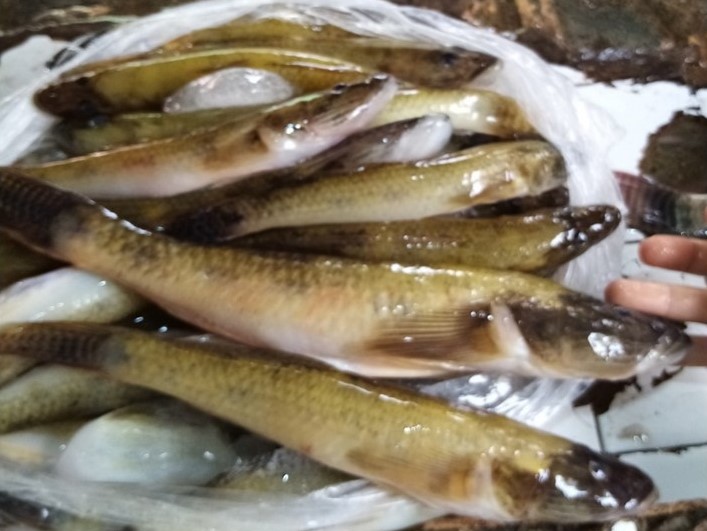To sustain the industry for ‘daing na biya,’ protocols for the wild collection and aquaculture of white goby should be further studied, developed, and implemented.
Initiating the said protocols, Mindoro State University is implementing the project, “Conservation and Aquaculture Research and Development Project for Glossogobius giuris (Biyang Puti) in Naujan Lake (Goby Project).” Funded by the Philippine Council for Agriculture, Aquatic and Natural Resources Research and Development of the Department of Science and Technology (DOST-PCAARRD), the project aims to undergo baseline biological study of white goby and initiate the aquaculture protocol development.

‘Daing na biya’ locally available in the Philippines. (Image credit: Mindoro State University Project team)
White goby (Glossogobius giurus) is native to various lacustrine ecosystems in the Philippines, particularly in Lake Naujan. This particular species serves as a key ingredient in the production of daing na biya, a specialty dried fish that contributes significantly to the livelihoods of local households around Naujan Lake.
The project has two main components, the first involving a comprehensive biological study aimed at characterizing the Naujan White Goby, while the second is dedicated to the development of an aquaculture protocol. As of September 2023, the project has successfully produced four batches of white goby larvae.
Another key aspect of the project's progress is the establishment of a protocol for the collection and transportation of broodstock. Notably, the project has managed to reduce broodstock mortality from 68% to 43%.

White Goby, scientifically identified as Glossogobius giurus. (Image credit: Mindoro State University Project Team)
Broodstock with body weights ranging from 96 to 116 grams, can consistently yield an average of 20,000 eggs, boasting an impressive 90% hatching rate and a 93% fertilization rate.
Daing na biya has long been widely recognized as one of the significant and cheapest dishes in the country. Moreover, it has provided livelihood and additional sources of income for fisherfolk. Thus, the project will be instrumental in sustaining the local production of daing na biya by preserving white goby in Naujan Lake, and continue providing livelihood to the communities around the lake.
Moving forward, the project's agenda include continued efforts in induced spawning, natural food identification, and experimentation in freshwater and brackishwater ponds to ensure the survival and growth of wild-caught fingerlings.
